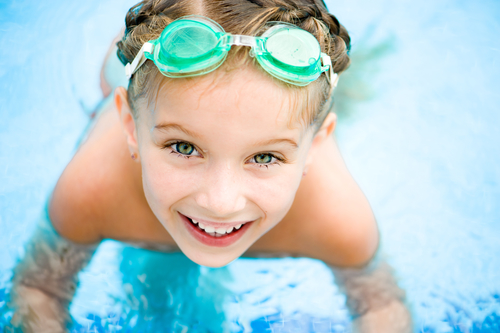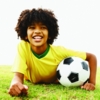Swimming Safety
With a summer as hot as this one, it is natural to want to be in the water as much as possible. While swimming can be a fun experience and good exercise, it is important to be aware of some basic water and pool safety.

Always keep in mind that children require constant supervision around water, whether in a bathtub or in the ocean. Nearly 1,000 children die each year from drowning, and a child can drown in less than 2 inches of water. It is important that children learn to swim. The American Academy of Pediatrics supports swimming lessons for most children over the age of 4. In the appropriate setting, children between the ages of 1 and 4 can be given lessons as well.
All children should always be supervised while swimming, and younger ones should be taught to follow the “touch supervision” rule, which means that an adult is in the water and within arm’s reach at all times. If a child is older and not in the water with an adult, that adult should limit all outside distractions such as phones and should never be drinking alcohol.
It is important to teach children basic safety when around the pool. They should never run around pool deck or push and shove others. They should always check how deep the water is by entering feet first. They should know to dive only in designated areas, and only when well supervised. Children should know to get out of the pool immediately if bad weather approaches. You should remember to remove all toys from the area after everyone is out of the pool. Children may be tempted to retrieve the toys later and are then at risk of drowning. The pool itself should also be secured when all swimmers are out.
If you have a pool at your home, it is important to keep the area safe. There should always be a fence that fully surrounds the pool or spa. The fence should be at least 4 feet high and climb-resistant, without any footholds or handles that can be grabbed. Chain link fences are not recommended. The gate should be self-closing and self-latching, which the latch placed well out of a child’s reach, at least 54 inches from the bottom. Ladders for above ground pools should be locked or removed so they cannot be accessed. Other items such as automatic pool covers, door alarms, window guards, and pool alarms will add protection, but should not replace an appropriate fence.
When swimming at a lake or pond, many of the same pool safety rules apply. Keep in mind that because the uncertain surfaces at the bottom of these bodies of water children should always wear aqua socks or water shoes. If children or teenagers are on a boat, they should wear a proper fitting Coast Guard approved life vest. For children under 5, the vest should have a strap between the legs as well as head support. Inflatable vests and water wings are not equivalent to these approved devices.
At the beach, remind children that they should only swim when a lifeguard is on duty and if the conditions are safe. They should not swim close to piers or pilings. They should not stand with their backs to the water as this increases their risk of being knocked over. If they are caught in an undertow, they should call for a lifeguard and swim parallel to the shore.
When thinking about pool safety you should also keep water-borne illnesses in mind. Recreational water sources such as pools and water parks can be contaminated and infection can be spread by swallowing, inhaling, or coming into contact with the water. Most infections are diarrhea related, and often a result of the parasite Cryptosporidium. In order to prevent this and other similar illnesses, remember that children with diarrhea should not swim during the illness or for 2 weeks afterward. Swim diapers should be used if children are not toilet trained. Diapers should be changed frequently and when possible, not poolside. Also teach children to avoid swallowing water.
Be mindful of the proper conditions under which to go swimming. Swimming in bad weather should always be avoided. The temperature of the water is important as well. Children should always enter the water slowly to make sure it is comfortable. Recommended temperatures vary depending on age and the amount of activity to be done. A temperature below 70°F is considered cold for most people. An ideal temperature is between 82°F and 86°F. Shivering, muscle cramps, and blue coloring to the lips may be signs of hypothermia. In these situations, children should immediately be removed from the water, dried, and kept wrapped in a towel.
Swimming and water play are enjoyable summertime activities. Parents are caregivers can make the time safe for everyone involved by being mindful of basic precautions.
Featured Blogger
Leslie Greenberg

Leslie Greenberg, MD, FAAP is a general pediatrician practicing with Princeton Nassau Pediatrics. She graduated from Brandeis University magna cum laude with a BA in sociology. She attended medical school at Tufts University School of Medicine and completed her residency training at The Children's Hospital of Montefiore in the Bronx, NY. She currently lives in the West Windsor, NJ area with her husband and two sons. She has been with PNP since 2009. Princeton Nassuau Pediatrics is a group of board certified general pediatricians whose mission is providing the highest level of health care to the children of the greater Princeton, West Windsor, Monroe, and Pennington areas. The group provides state of the art care for children from infancy through college based on the most up-to-date medical advances. PNP has four locations, and offers routine well care visits, same day sick visits, weekend/holiday and evening urgent care coverage, as well as full in-office laboratory services. Visit www.princetonnassaupediatrics.com.























